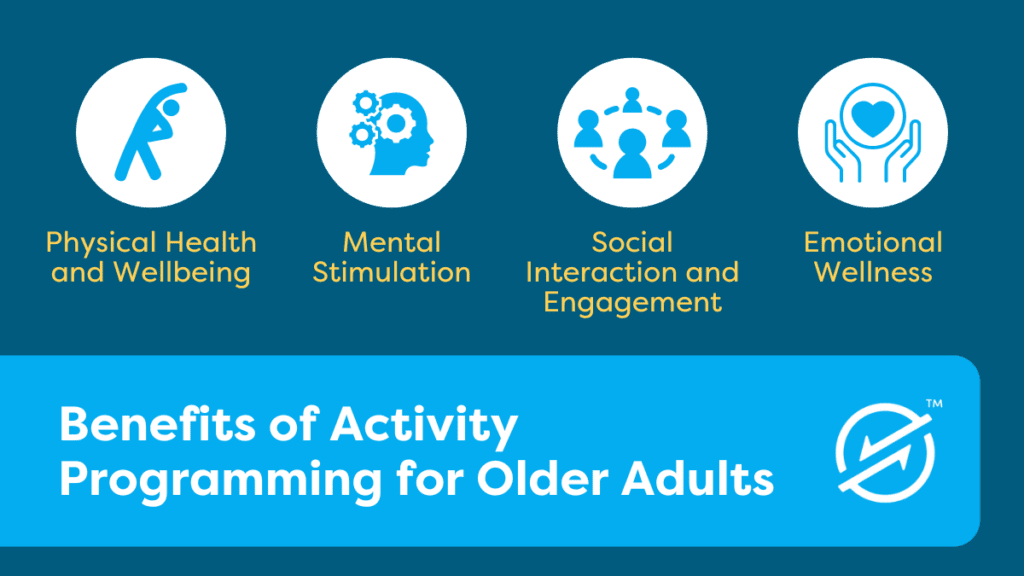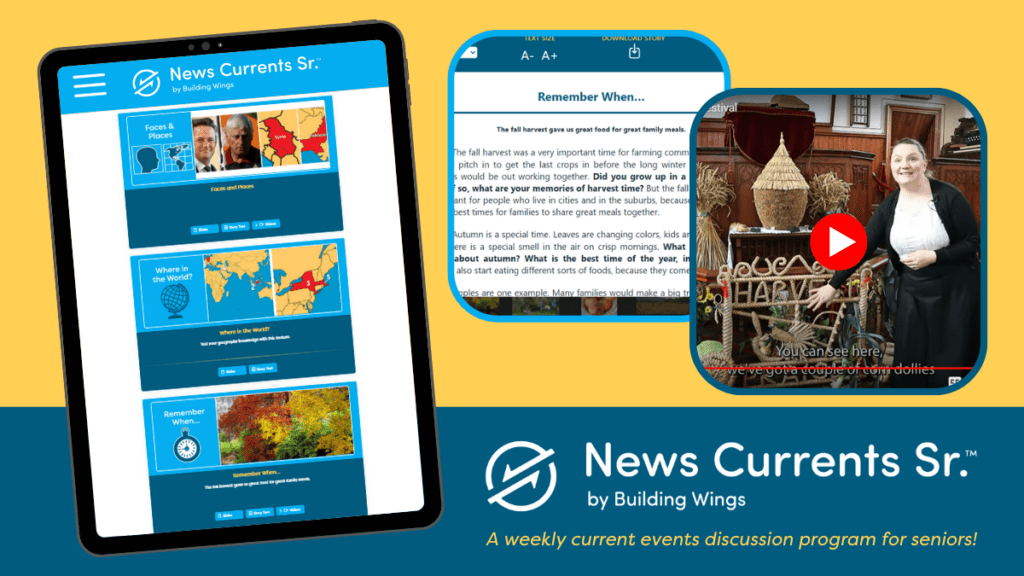
Finding the right senior living community involves negotiating a checklist of factors: location, pricing, amenities, services, medical care, dining, accessibility, and more. Recreational opportunities are an often-overlooked but vital component of assessing community compatibility.
Senior living communities are an important bridge between independent living and assisted care, and their activity programs play a crucial role in enhancing the quality of life for older adults. Shalyne Dodd, a recreation therapist at a senior living community in Saskatchewan, Canada, notes that “recreation is more than participating in activities for enjoyment. It aims to help maintain or improve the physical, mental, social, emotional, and spiritual well-being of [residents].” A study on the impact of leisure activities on older adults’ cognitive function, physical function, and mental health found that recreational activities are “positively associated with the three successful aging indicators.”
Activity programs are essential for healthy aging. The benefits are wide-ranging and address the physical, cognitive, and emotional wellness of older adults.
Benefits of Activity Programming for Older Adults

Activity and recreational programs enrich the quality of life for people of all ages. Their impact on senior adults includes:
1. Physical Health and Wellbeing
Moving the body regularly is key to maintaining health and preventing common aging-related ailments. Movement classes such as yoga, water aerobics, stretching, and dance, as well as exercises such as walking, biking, gardening, and racquet sports, help maintain muscle strength, stamina, and overall mobility. Older adults who move their bodies daily tend to have better balance and are less likely to experience falls, fractures, and other health complications. They are also at reduced risk of heart disease, osteoporosis, and diabetes.
2. Mental Stimulation
Stimulating the mind is just as important as stimulating the physical body. In addition to bodily movement, quality activity programs offer a wide variety of intellectually engaging and challenging pastimes. Preventing cognitive decline and reducing the risk of dementia are just a few of the benefits of mentally stimulating activities.
Strategies for mental stimulation include crossword and Sudoku puzzles, reading, memory games, riddles, strategy games such as chess or bridge, learning new vocabulary, and playing an instrument. And don’t forget about intellectual discussions! Talking with others can promote mental agility by inviting older adults to learn new things, consider alternative perspectives, share experiences, and engage in lively conversations with peers.
New Currents Sr., a weekly life enrichment resource created specifically for older adult engagement, includes features such as word jumbles, matching activities, multiple-choice quizzes, debate prompts, word searches, and more. News Currents Sr. brings current events and news, as well as reflections on history, to older adults and serves as a stimulating, interactive activity to include in community activity programming.
3. Social Interaction and Engagement
The National Academies of Science, Engineering, and Medicine released a 2020 committee report that found that social isolation and loneliness should be considered public health problems because they are clear risk factors for death, depression, anxiety, suicidality, and cognitive disorders such as dementia. The report cites other studies that found that social isolation and loneliness in older adults are associated with a 50% increased risk of developing dementia, a 30% increased risk of incident coronary artery disease or stroke, and a 26% increased risk of all-cause mortality.
In other words, staying connected is good for your health. Engaging in meaningful and productive activities with others helps create a sense of connection and purpose.
Working on a puzzle together, volunteering at a charitable organization, or having a lively debate about a political election helps people integrate into a social network, boosting their sense of self-worth and the quality of their relationships.
These are all reasons why News Currents Sr. includes prompts for exciting group discussions–so that senior living community members will gather and converse. Designed specifically for use in a group setting, it’s a resource that invites reminiscing, collaborative work, the lively exchange of ideas, and civil discourse. Engaging in these activities reduces the risk of social isolation and loneliness and contributes to long-term wellness.
4. Emotional Wellness
Though feeling stressed is a common emotional state in today’s world, chronic stress has very real health repercussions, which include hypertension, heart attack, and stroke. Replacing stress with a different emotion can protect physical and mental health.
After retirement, it’s common for older adults to struggle to feel a sense of purpose or meaning. Activity programs are a way to provide safe spaces for self-expression, creativity, and other emotional outlets. Making pottery, painting, reading and discussing the news, scrapbooking, joining a book club, or cooking a meal for friends are all opportunities activity programs can offer to older adults to help them feel a sense of purpose and fulfillment.
Activity Programs Improve Seniors’ Quality of Life

Vibrant activity programs enrich the lives of residents in senior living communities. They serve physical, mental, social, and emotional needs to boost wellness while aging. Investing in the creation of a rich activity program for your community will reap rewards for every resident.
Looking for activities to add to your activity program? Bring News Currents Sr. to your community! Try it for free and then connect with us to learn more about bringing this resource to your life enrichment programming.